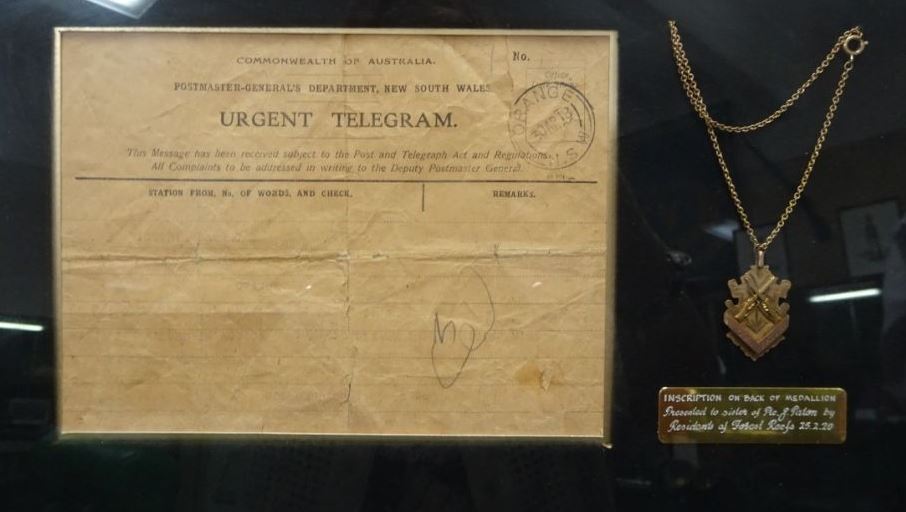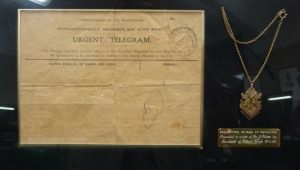When James Paton enlisted at Dubbo in February 1916 he stated his age as 28 years and seven months. He was, in fact, born in Orange on 29 June 1885, the third of six children to George Daniel Paton and his wife Emma Jane nee Bargwanna. Aged 31, perhaps James believed he would have more chance of being accepted into the AIF if he claimed to be under 30.
James spent a week at camp in Dubbo before proceeding to Liverpool for further training. A private in the 3rd Battalion, 20th Reinforcement, James embarked HMAT A14 Euripides in Sydney on 9 September 1916, arriving in Plymouth late the following month.
Private Paton proceeded to France in December 1916. In May the following year he sustained a gunshot wound to the left thigh and was evacuated to England and admitted to the 4th Southern General Hospital at Plymouth. James spent over two months in hospital; he was discharged to furlough at the end of the July and marched into No 1 Command Depot at Perham Downs in Salisbury in August 1917.
In October 1917 James returned to the Western Front in France. In April 1918 the 3rd Battalion was engaged at Strazeele in northern France defending the British-Australian front line during a German offensive. It was here that Private James Paton was killed in action on 14 April 1918.
When James enlisted he nominated his sister Levine in Lucknow as his next of kin, as both his parents were deceased. In June 1917 Base Records Office wrote to Miss L Paton at Lucknow to advise that James had been admitted to hospital in England, however the letter was returned unclaimed.
Ada Fraser, James’ eldest sister was located in Sydney following his death, and it was she who eventually received his personal effects and war medals. But this was not until the Army was convinced that she was, in fact, entitled to them. On 7 December 1922 the Base Records Office wrote to Ada to enquire if her parents or an older brother or sister were alive. Ada replied two days later, confirming that both parents were deceased and that she was the eldest child. She also added that she had been forwarded her brother’s deferred pay and gratuity bond. On 19 December 1922 Base Records replied:
[I] regret the information supplied is not sufficient to enable me dispose of the late soldier’s war medals etc… Will you kindly state definitely whether the deceased has any surviving brothers.
On 9 January 1923 Ada replied to their request asking:
Would you be good enough to let me know what you intend doing with regard to mementos granted to my late brother…I fail to understand why you doubt my word after the severe test you put me to when you paid me his gratuity and deferred money. I think that alone should prove to you that I am his next of kin.
Ada received her brother’s war medals later that month.
In 1923 the Anzac Memorial Avenue of trees was planted along Bathurst Road to commemorate fallen WWI soldiers. A tree was planted in honour of “Pte J Paton”; it was donated by H Hansen. Very few of the trees are still standing today.
James Paton is commemorated at the Australian National Memorial at Villers-Bretonneux in France, on the Australian War Memorial Roll of Honour, Panel number 37 and and on the World War I Roll of Honour on the southern face of the Orange Cenotaph.


